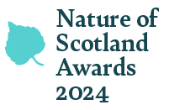The St Kilda Archipelago of Islands and Stacs is located 42 miles west of Benbecula in the Outer Hebrides. St Kilda is managed by the National Trust for Scotland in partnership with Scottish Natural Heritage and the MoD. St Kilda has the highest sea cliffs in the UK; the cliffs at Conachair are 1400 feet high. Our St Kilda anchorage is in the spectacular Village Bay in main Island of Hirta which is the only island where a boat can land and put people ashore. Hirta offers great walking opportunities with a walk to the Mistress Stone and the Lovers Stone being very popular.
Amazing wildlife
St Kilda is home to the biggest colony of gannets in the world and also large numbers of puffins. Thousands of puffin burrows pepper the steep grassy slopes of Dun. Other nesting birds include guillemot, razorbill, great skua, Manx shearwater,storm petrel, Leach’s petrel and shag. Our unique knowledge of St.Kilda enables us to give our guests a spectacular ‘close up’ voyage around the fascinating islands and stacs that make up St.Kilda. We are able to cruise directly under the “Casting Off Stone” on Stac Lee with its many thousands of nesting gannets, giving an incredible view of probably the most spectacular of all the Stacs of St.Kilda. Many other species of birds can be found breeding here or passing through. The St Kilda wren and St Kilda mouse are both unique to the islands.
The only seal to frequent the shores of St Kilda is the Atlantic grey seal. The St Kildan’s hunted the seals and after they abandoned Hirta, seals moved in to breed. The main concentrations are in Glen Bay, Soay Sound and on both sides of the neck of the Cambir. Their calls echo round the Tunnel at Gob na h-Airde and, appropriately enough, at Geo nan Ron – the cleft of the seals.
Sightings of cetaceans are mainly made in the summer months from May to August. Minke whale is the most commonly recorded species, with orcas as the next most commonly seen species. Occasional groups may remain around the islands for several days or even weeks. Groups of up to 15 Risso’s dolphins have been seen, as well as white-sided dolphins. Harbour porpoises and small numbers of white-beaked dolphins are sometime spotted with bottlenose and common dolphins and large whales occasionally recorded.
Fascinating ancient heritage
St Kilda also has a fascinating ancient heritage and the remains of a dun (fort) on Island of Dun can still be seen. There have been people on St Kilda since prehistoric times, exploiting the rich resources of the sea, growing crops and keeping animals. It is not clear when the first settlers came to St Kilda, but simple stone tools found on Hirta suggest that Bronze Age travellers may have visited St Kilda from the Western Isles some 4,000 to 5,000 years ago. In the 1830s the Rev Neil Mackenzie found what were probably remains of burial cists in Village Bay. Excavations in 1995 revealed a possible burial structure dating from the Bronze Age. In 1844 an earth house (souterrain), possibly a store associated with an Iron Age house dating from about 2,000 years ago, was discovered.























Many thanks to Rob, Craig, Sian and Zoe, a wonderful trip on Elizabeth G. Super company, stunning scenery, great food what more could you ask for? We shall be back 2022. Already looking forward to it.
Alan and Yvonne Bower: 9 August 2021Far-flung islands: Shiants & the Summer Isles